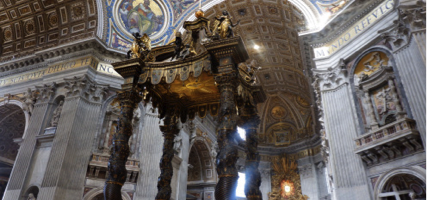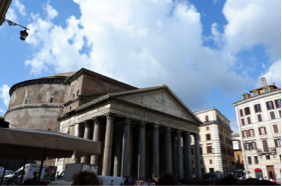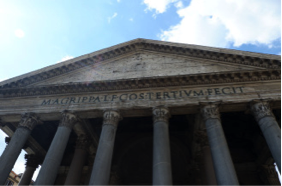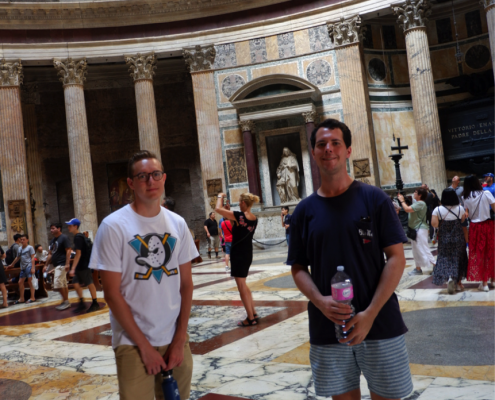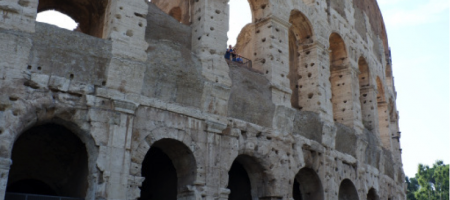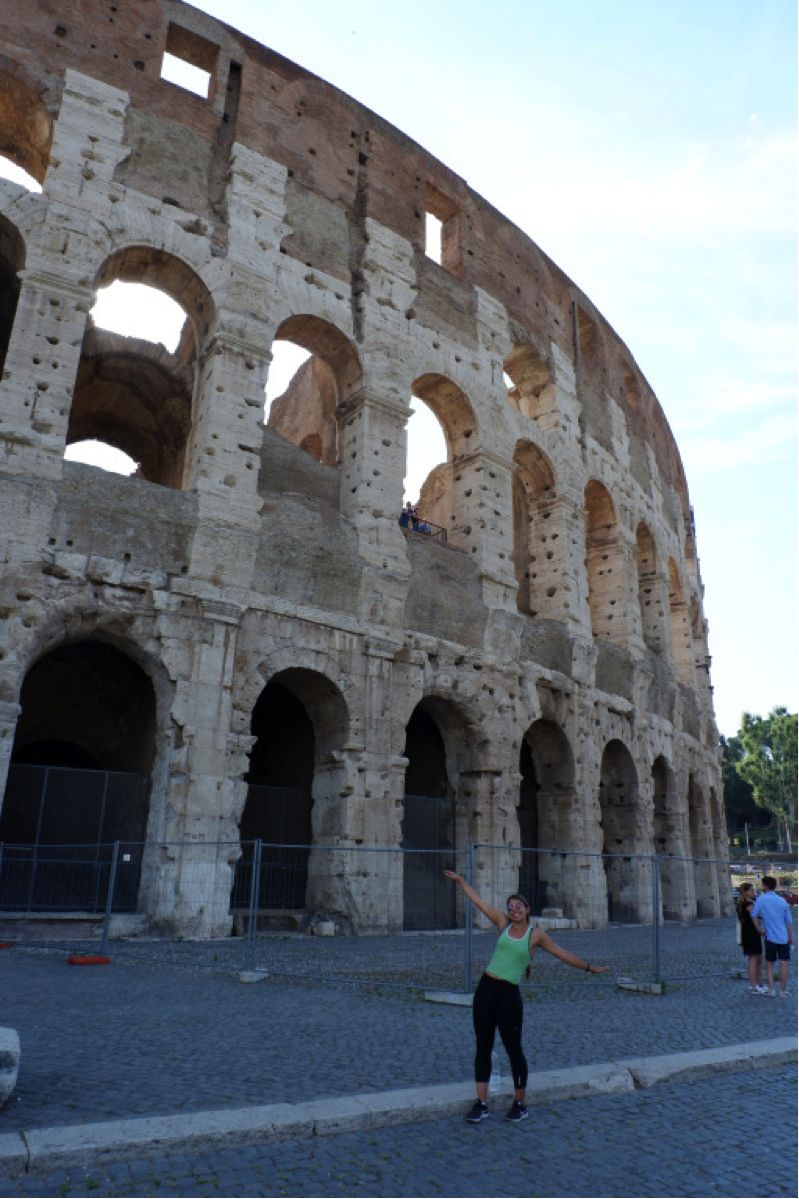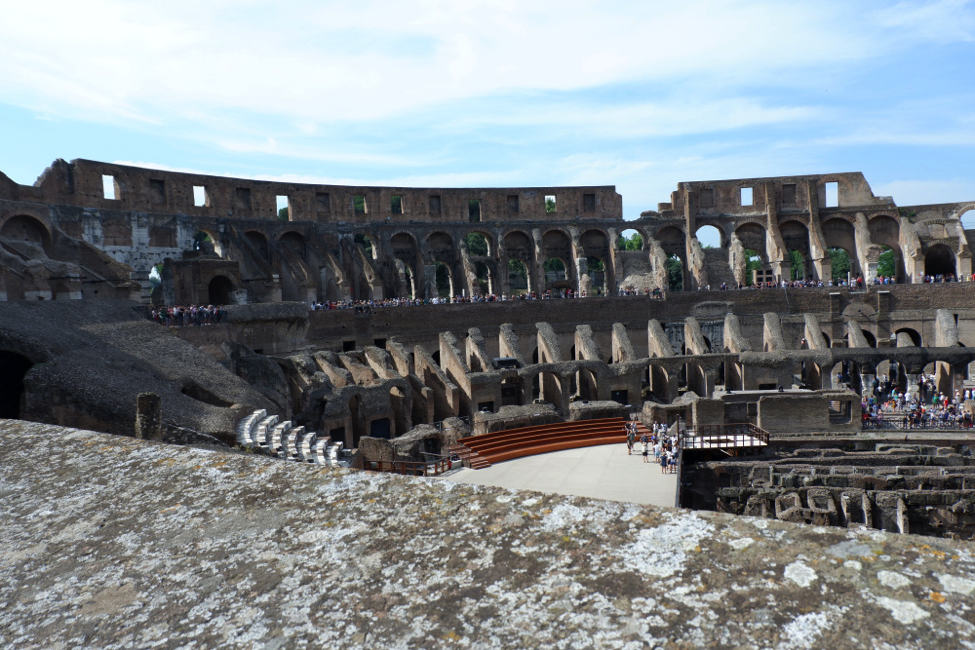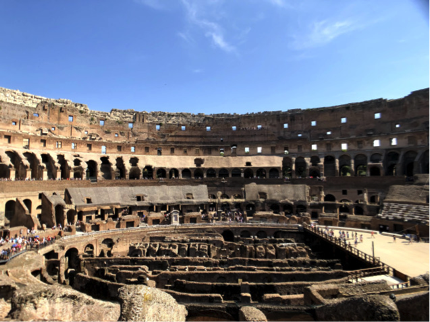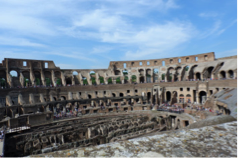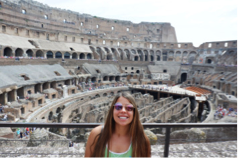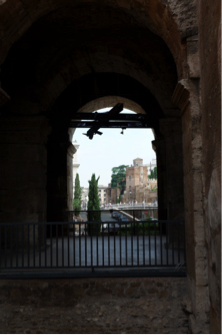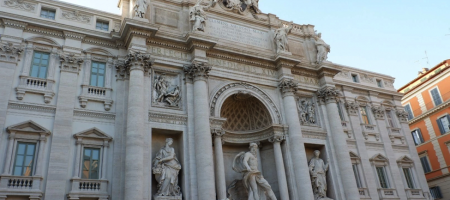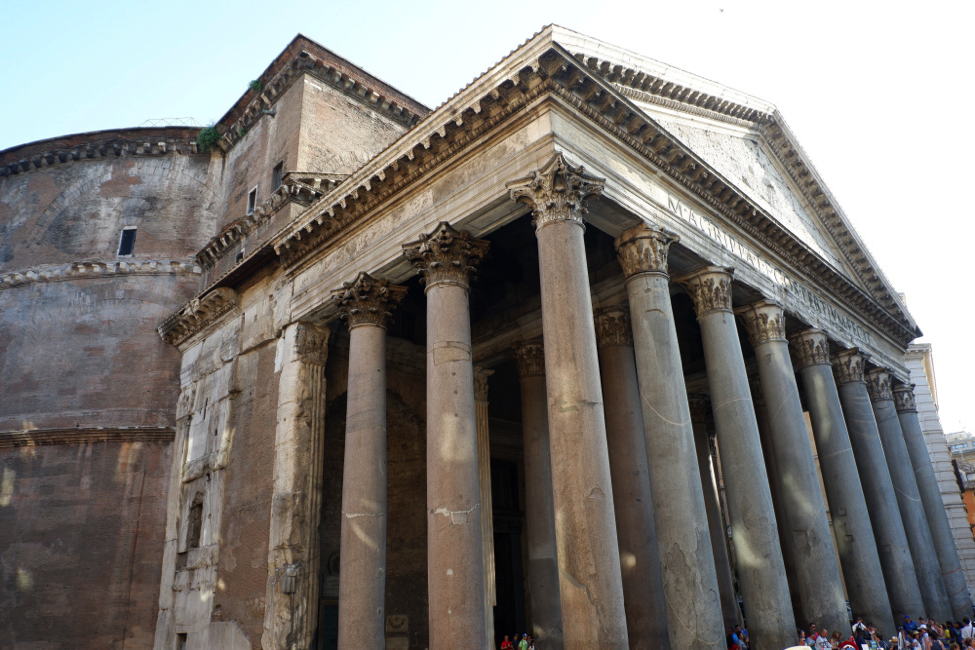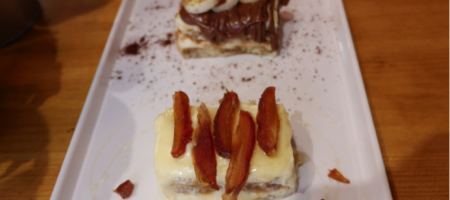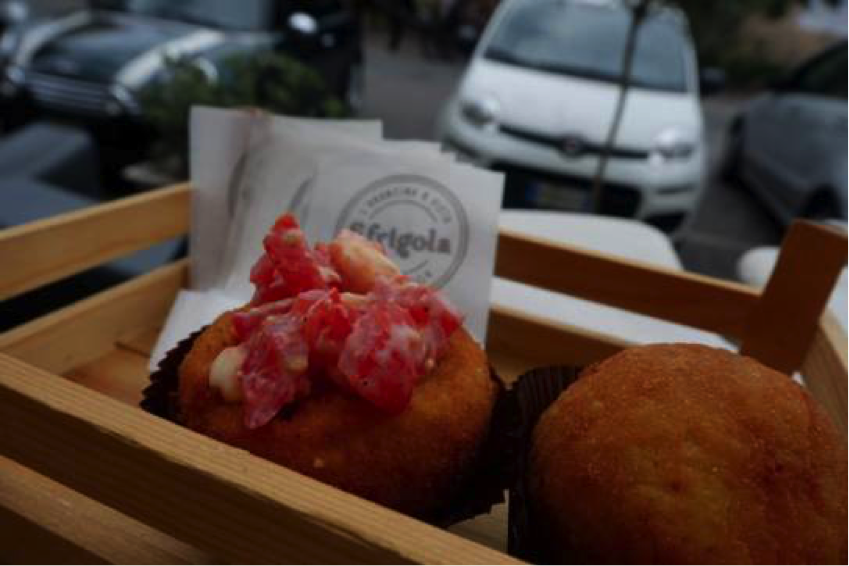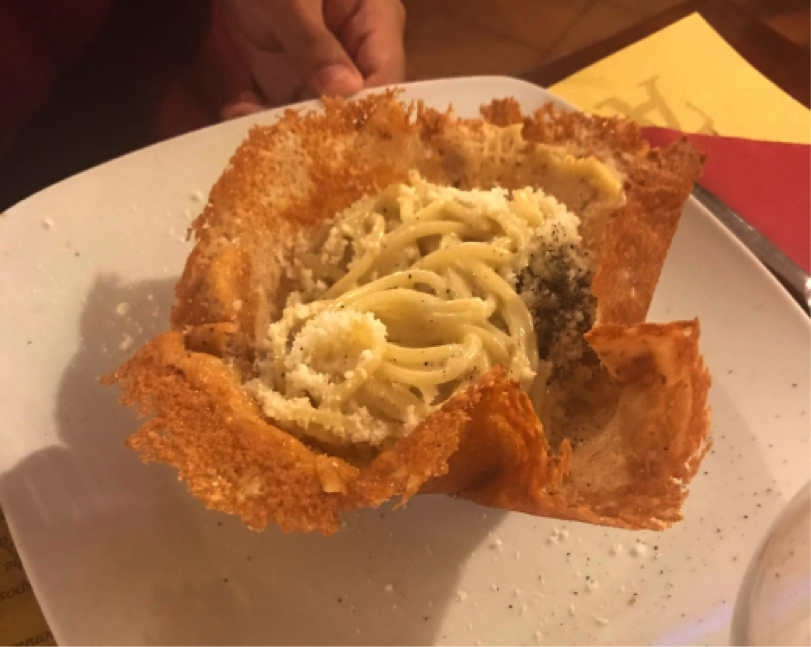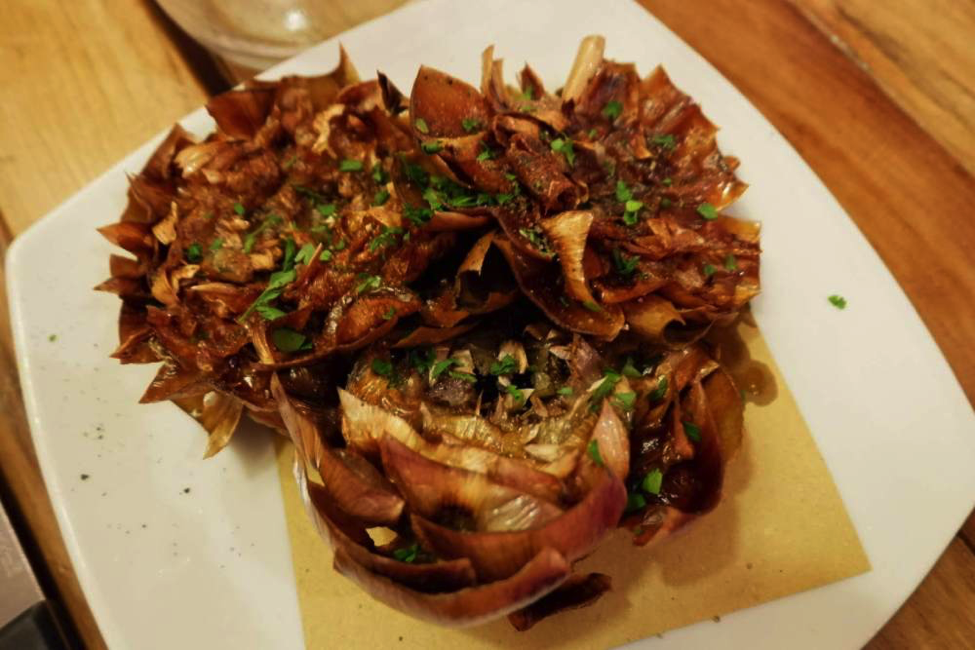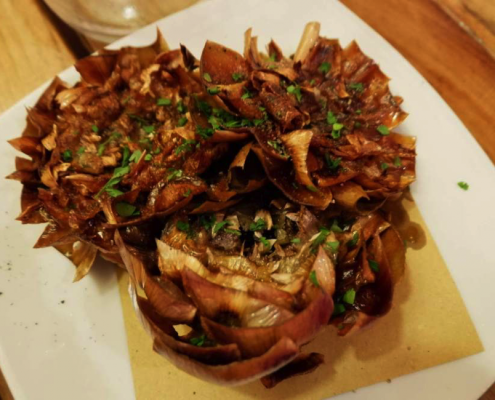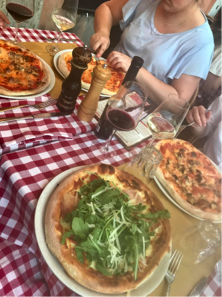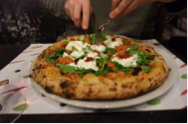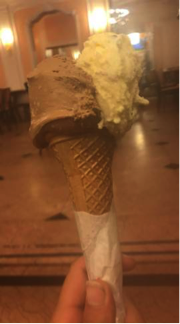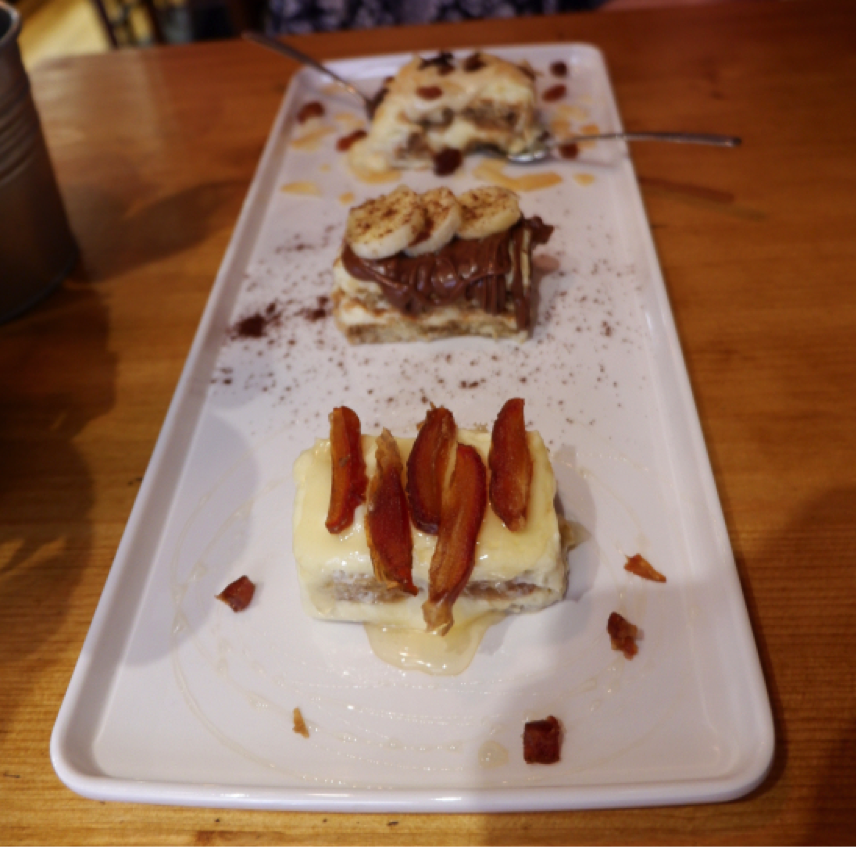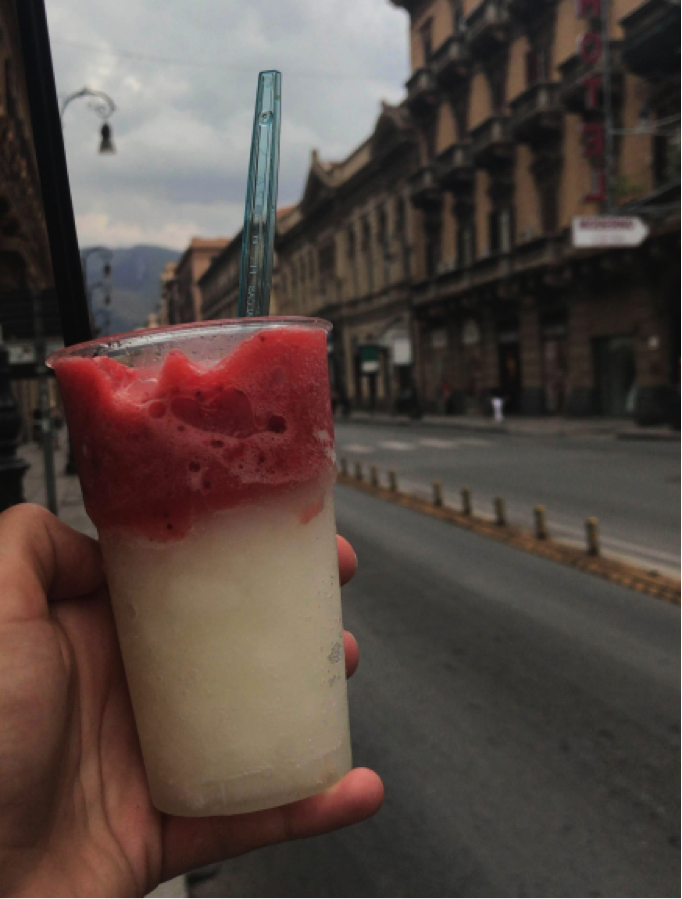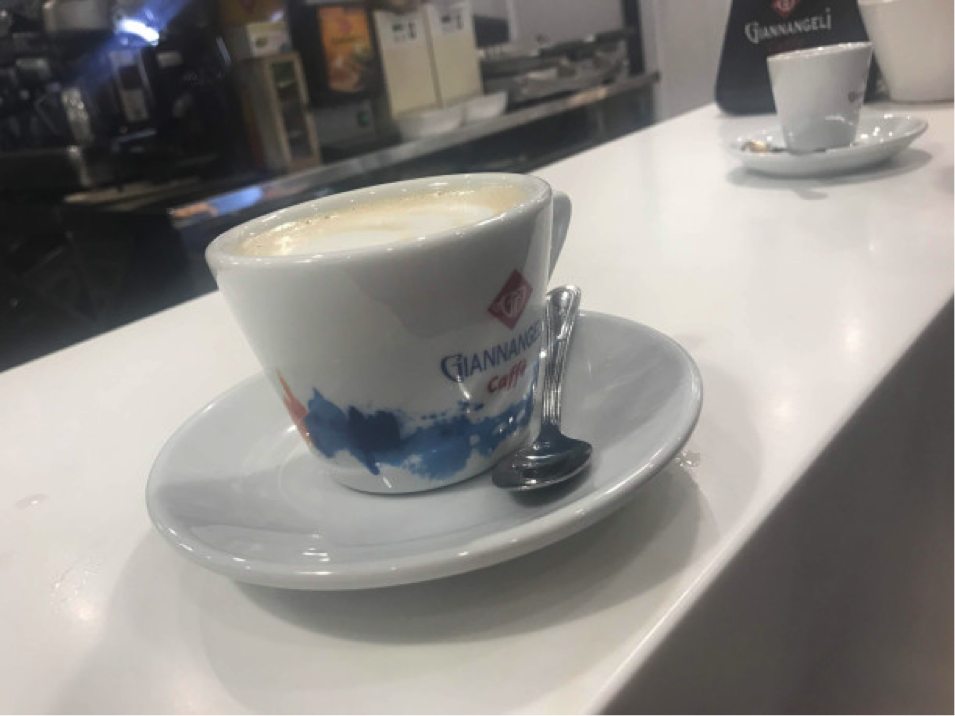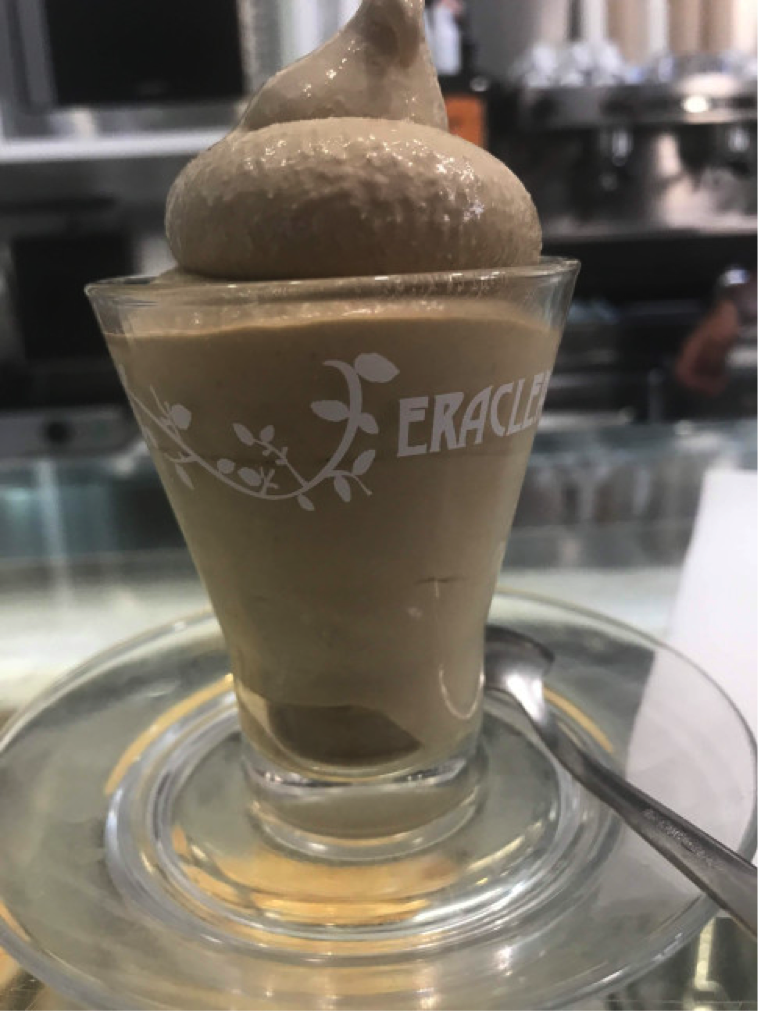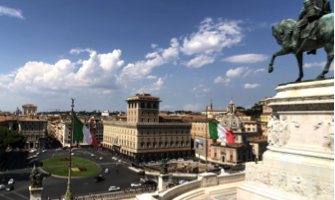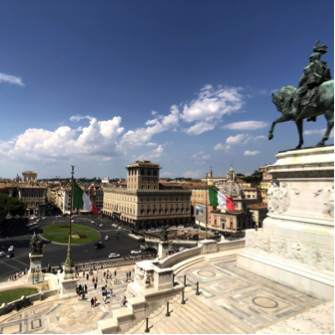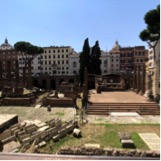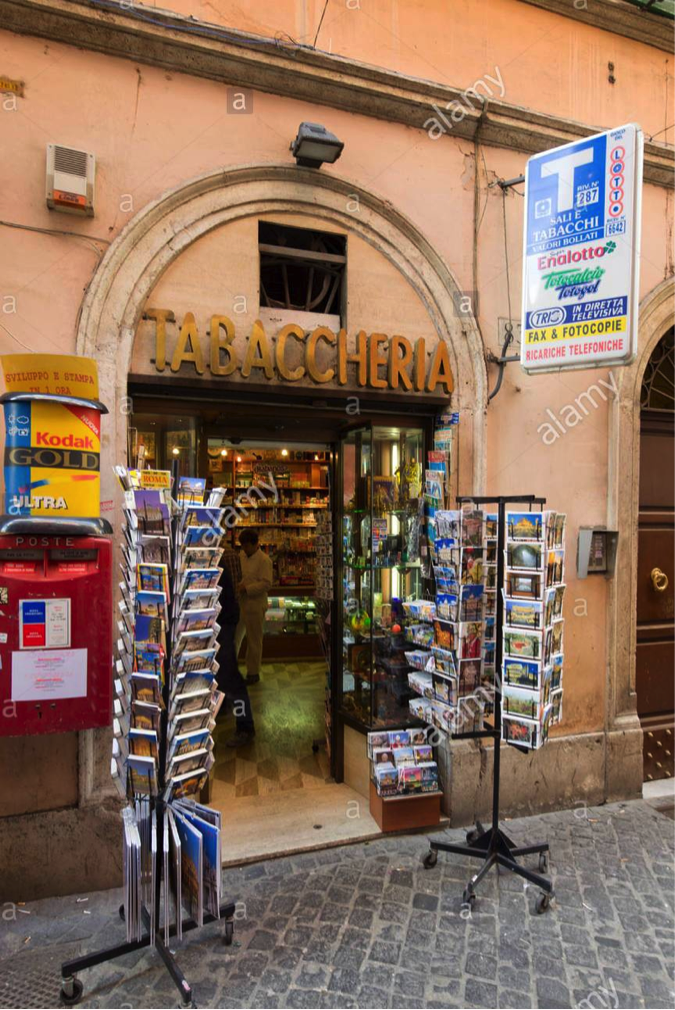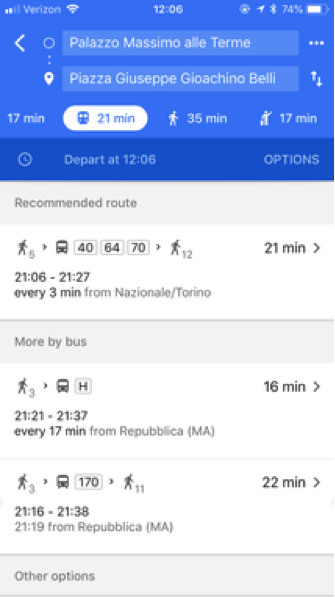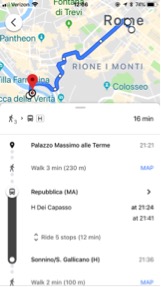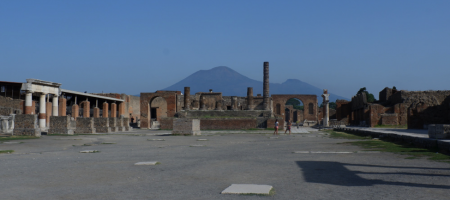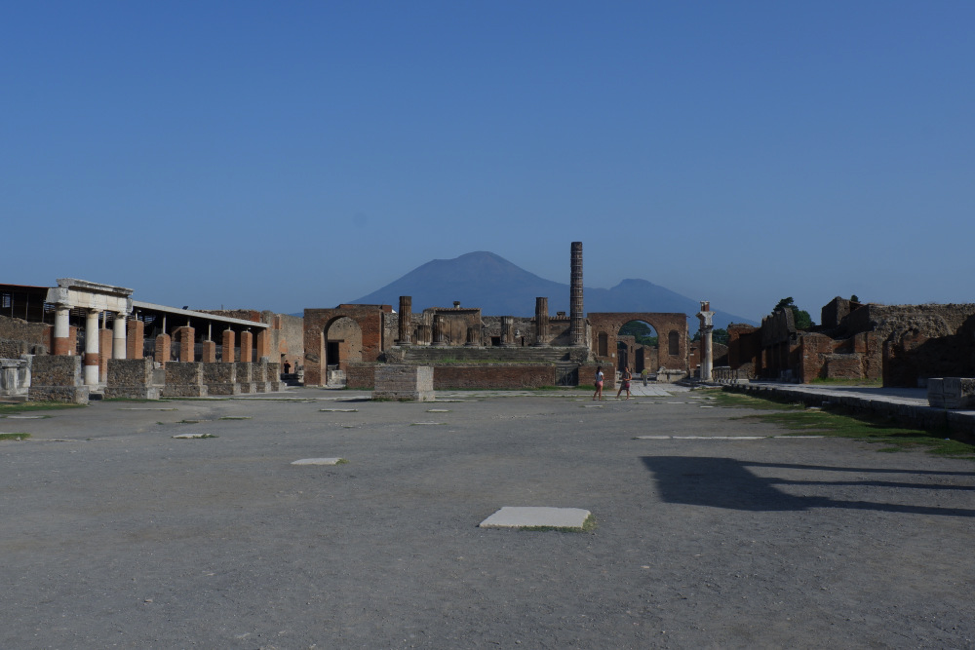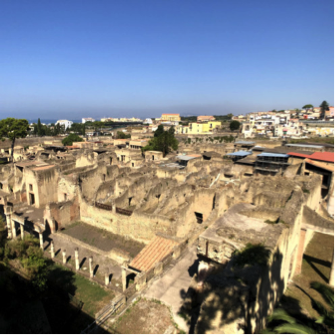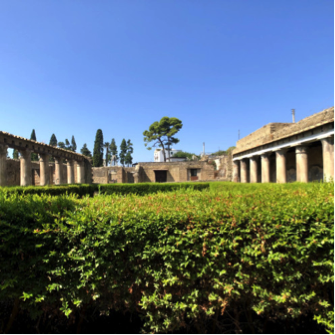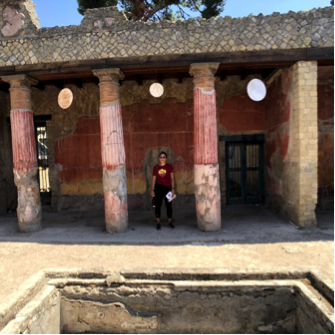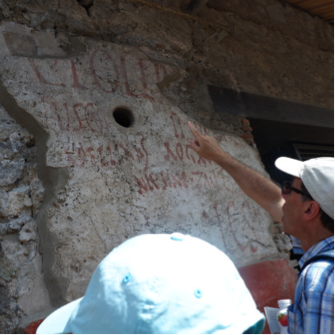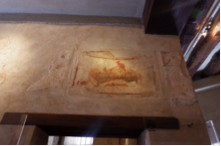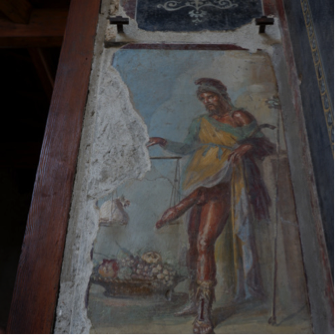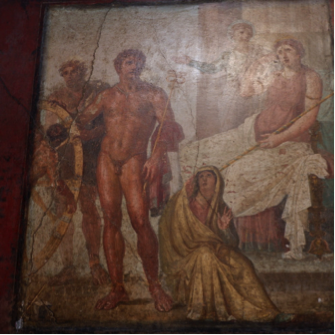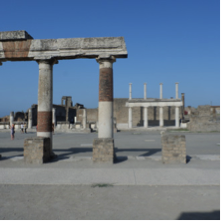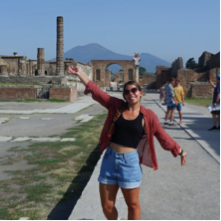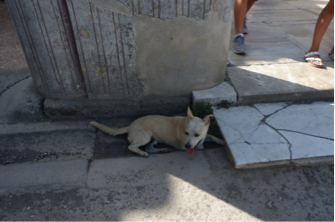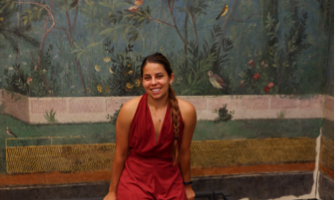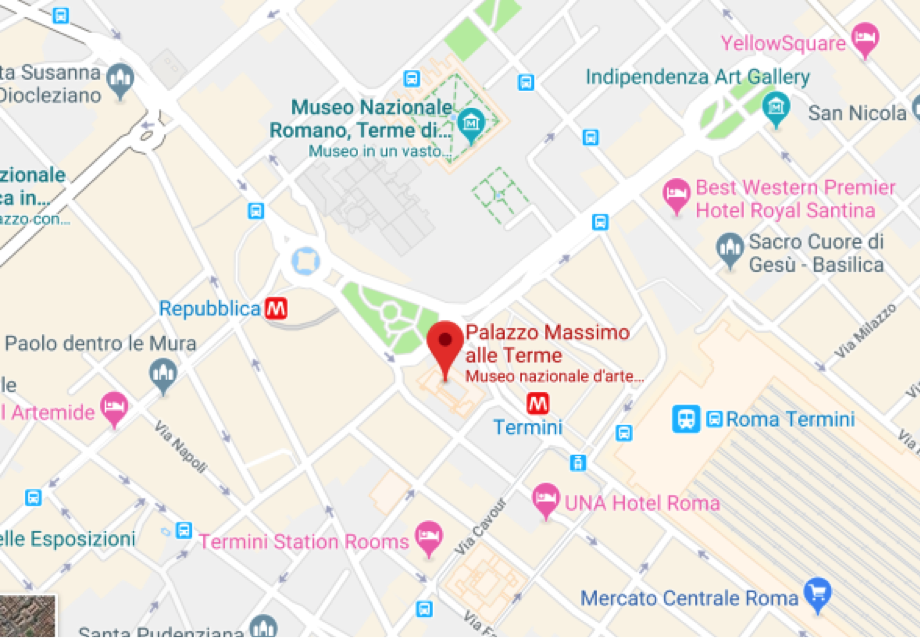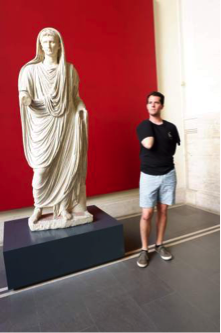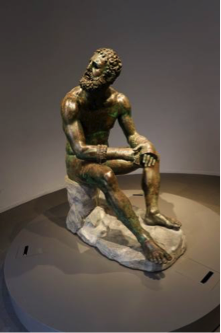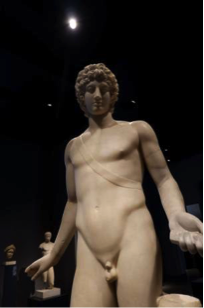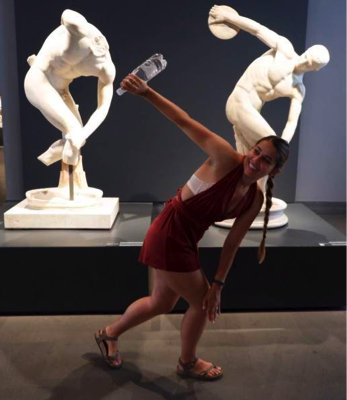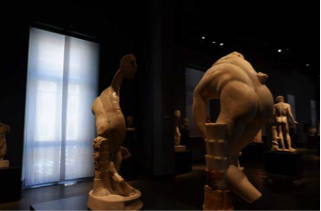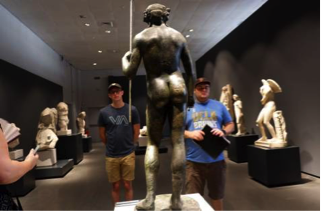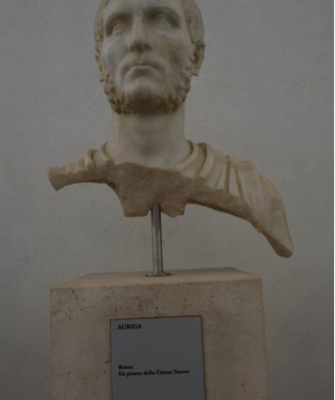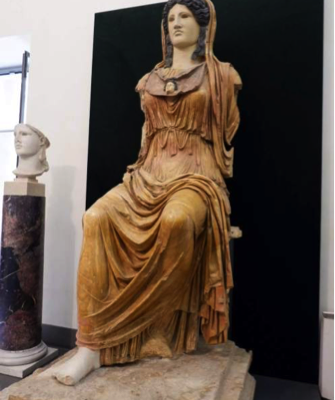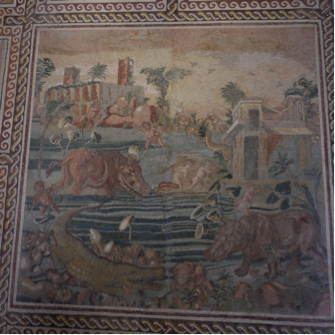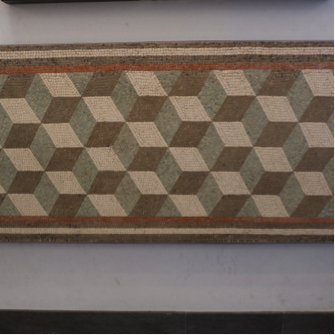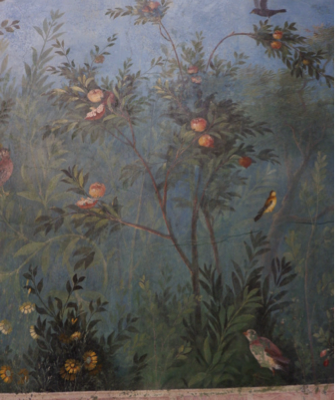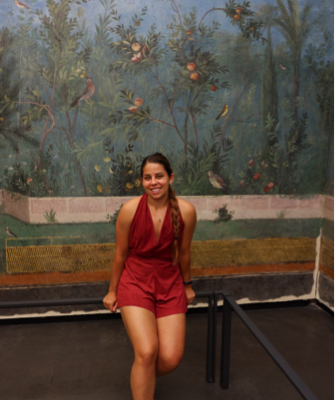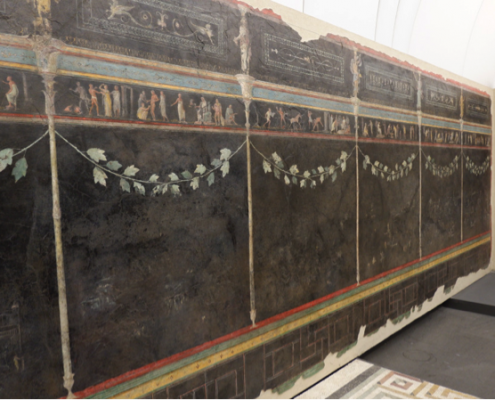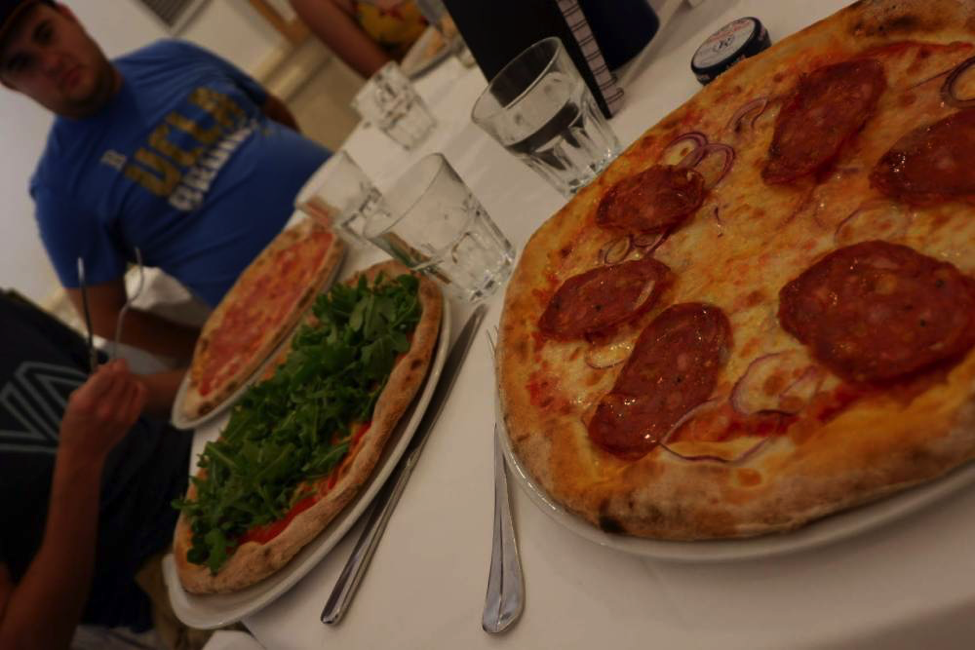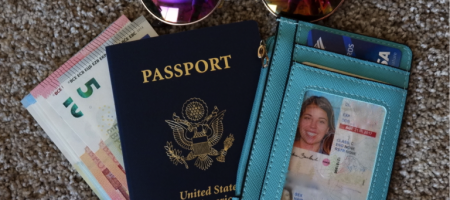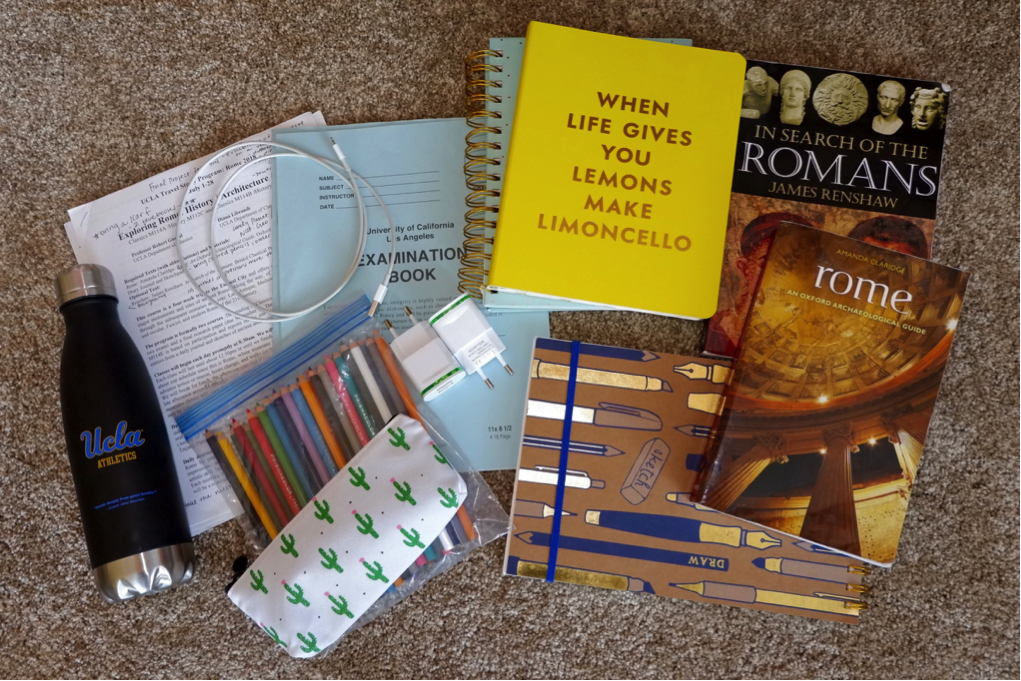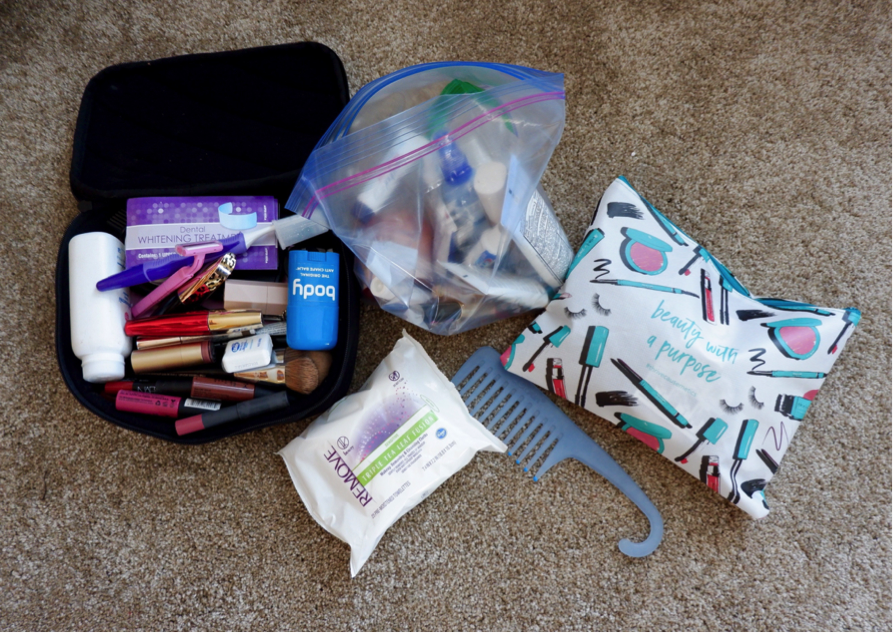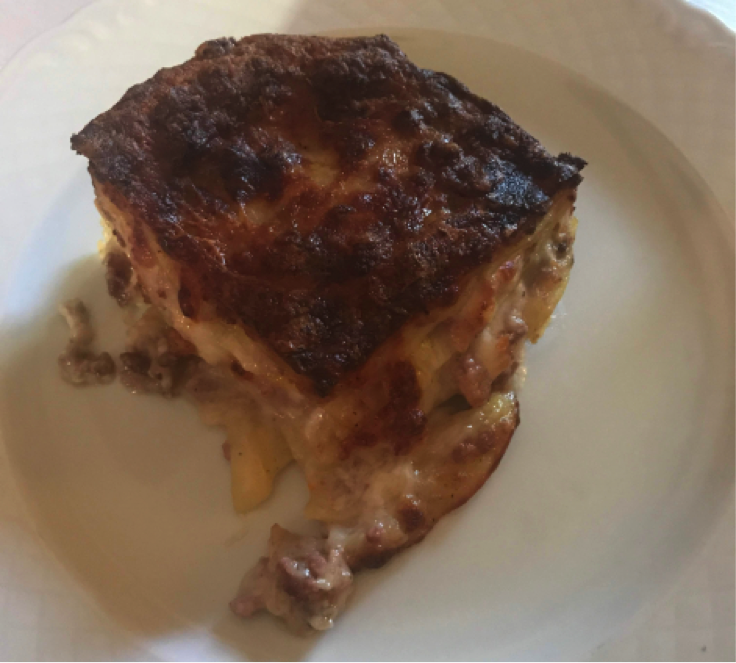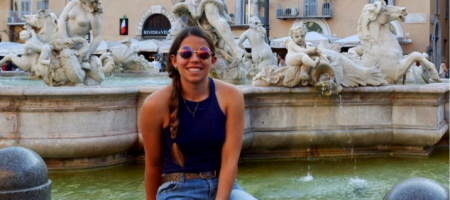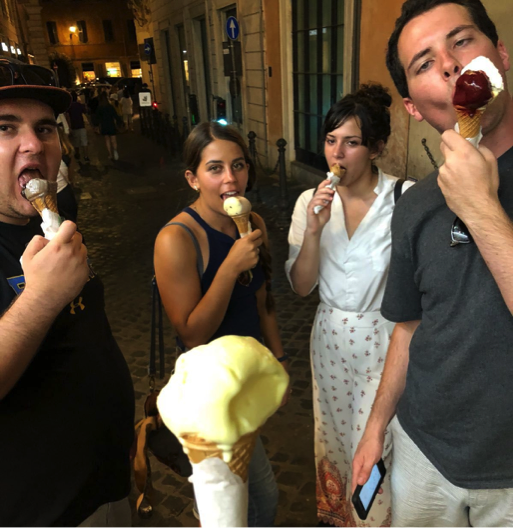Italy | The Pantheon
By Andrea Zachrich
The Pantheon
I love the Pantheon, especially as a college student and a person who studies classics. As far as being a college student goes, its completely free which is awesome because many of the sites in Rome can get expensive. You can go back as often as you would like (I actually took 2 of my friends to the Pantheon while they were on vacation in Rome and my brother and went another time on my own). As a Classics enthusiast, the Pantheon is perhaps the best preserved ancient monument in Rome (and maybe even in the world). The structure, floors, and walls are all mostly original (with some restoration work and later Christian additions). While there have been some modifications in terms of the sculptures due to its conversion to a Christian church, what remains can really give you a sense of the grandeur and beauty of ancient Rome, which is difficult to imagine in many of the other ruins from antiquity, even in places like Pompeii and Ostia, where the buildings are very well preserved, because they have lost a lot of the stucco and marble facing that would have made them so incredible.
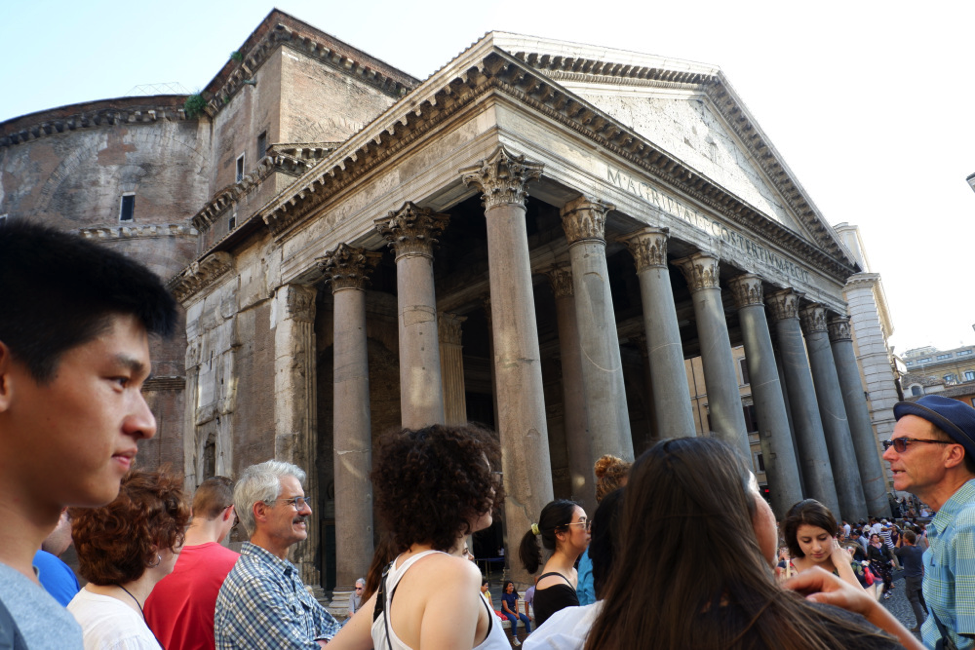
History
The Pantheon really has 5 main histories: 3 rebuildings in antiquity, it’s use as a Christian church from the end of antiquity onwards, and it’s modern history as a tourist attraction in Rome. This building was very influential during the Renaissance, and is one of the most popular sites for tourists (and locals) today.
Ancient Times
The word pantheon is actually Greek in origin. It roughly translates into “all the gods”. Pan means “all” and theon means “gods”. It is, as the name suggests, a temple dedicated to all of the gods. Some scholars, however, think that it was dedicated not to all the gods in the Roman pantheon, but to all the planet gods. Due to the removal of the Roman sculpture on the inside, however, we cannot be sure exactly which gods the temple was dedicated to.
The first Pantheon was built during the years 27-25 BC by Marcus Agrippa. Marcus Agrippa Agrippa was a powerful and influential man who was the right hand man of Emperor Augustus, and essentially served as co-emperor. He has a lot of building projects in the Campus Martius (which is where the Pantheon is). Originally, Agrippa had wanted to put a statue of Augustus inside the temple alongside all of the gods, but Augustus would not allow it, stating that he was not a god yet. Instead, Agrippa decided to put statues of Augustus and himself on the outside of the temple in order to show that they were favored by the gods.
This first Pantheon was destroyed in a fire in 80 AD, and rebuilt by the emperor Domitian. This second temple was again destroyed in 110 AD. Very little is known about these earlier buildings. No one is quite sure what they looked like or their decorations. Some ancient authors have written about them, but even these writings lack clues as to what the building may have been like. Some scholars have speculated that the original entrance actually faced in the opposite direction, but we really don’t know.
The Pantheon we can visit today was built during the reign of Emperor Hadrian, sometime from 117-138 AD, although most scholars agree that it was probably finished at some point during the 120s. We’re not sure because Hadrian actually put up the original inscription on the new building that reads (in latin of course) “Marcus Agrippa, son of Lucius, during his third time as consul, made me”. Most believe that he put up this inscription because he wished to associate himself and his rule as emperor with that of Augustus.
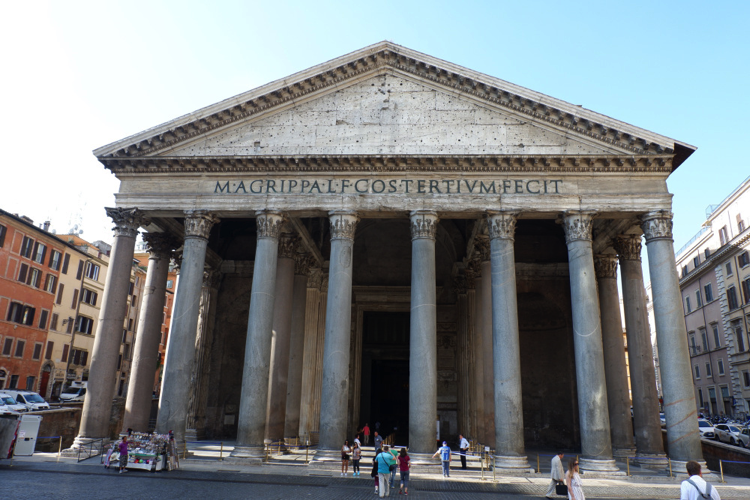
Middle Ages and Beyond
The Pantheon was given to the Catholic Church in 609 AD by Emperor Phocas, who was the Byzantine emperor in the east. The temple was then turned into a Catholic church. While the church left most of the exterior and interior marble decoration intact, they did remove the pagan sculpture from the inside. Eventually, the marble that covered the exterior brick you see today was taken, as well as the marble decoration from the pediment. We can’t be entirely sure, but many scholars believe that the decoration on the pediment was that of an eagle based on the holes left from where the decoration was nailed into place.
The interior and exterior dome of the Pantheon, as well as the interior roof of the porch used to be covered with bronze. This bronze was taken by the Catholic church in the mid 1600s during the reign of Pope Urban VIII and was actually used to make canons for the Castel S’ant Angelo (known as Hadrian’s Mausoleum to us Classics nerds), and Bernini’s bronze baldachin that you can see inside of St. Peter’s Basilica in the Vatican today. It must have been a marvelous looking building before the bronze was stripped away (although it is still quite impressive without it).

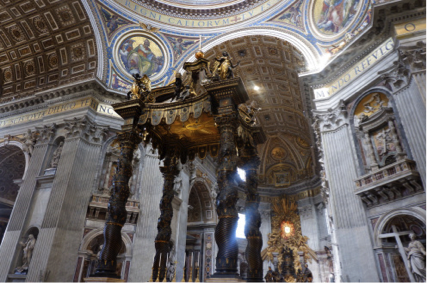
During the 1600s two bell towers were built on either side of the porch, but they were removed in the late 19th both because they were fairly unattractive (they were nicknamed the “ass’s ears”) and because they did not reflect the original design of the building.
Today, the Pantheon is still used as a Catholic church, although they only have services on Sundays (Saturday evenings for English speakers), and also do not enforce the usual rule of churches in Italy where you must cover your shoulders and legs down to the knee. It is treated much more like an ancient monument and much less like a typical church. It is, however, free to visit because it is still a church.
The Building
The structural integrity of the building has not been compromised in the nearly 2000 years since it was built. The building has managed to survive fires, earthquakes, invasions of the city, and floods without any worry by modern engineers that it will collapse, which really is remarkable.
The building can be divided into two main areas: the porch and the interior (with the dome). The porch is beautiful. It features monolithic columns of granite imported from Egypt. The word monolithic means that these columns are each made using only one piece of stone! They each weigh over 60 tons, and it would have been an incredibly costly and time consuming process to import them. The pink granite columns on the left side, however, are from the Baths of Nero and replaced the original ones in the mid 1600s .
As stated earlier, the interior of the porch roof used to be covered with bronze, and there were two giant statues of Augustus and Agrippa in the niches on the porch. While the decorations from the pediment and the bronze have been stripped away from the porch, it is still a very imposing and beautiful building to look at from the front.
The Pantheon is, of course, most famous for it’s dome. It was the largest dome in the world until the mid 1800s, and is still the largest unsupported concrete dome in the world. Roman engineers were able to accomplish this thanks to a well-made design and their choice of material: roman concrete. Roman concrete is particularly strong because it makes use of volcanic ash as one of the ingredients. The chemical reaction from using this material actually makes the concrete stronger over time. The design has also allowed the dome to stand for as long as it has. The supporting base of the dome is very wide, at 21 feet thick. As it climbs upwards, the concrete dome gets thinner and thinner until it’s only about 4 feet wide so that there is less weight to support as it gets taller. The dome is a perfect half sphere. The diameter across is as long as the dome is tall from floor to oculus. There is an oculus that’s about 8 meters wide at the top of the dome to allow in light and air. The photos show what the inside looks like today.

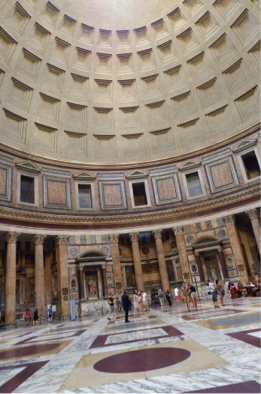
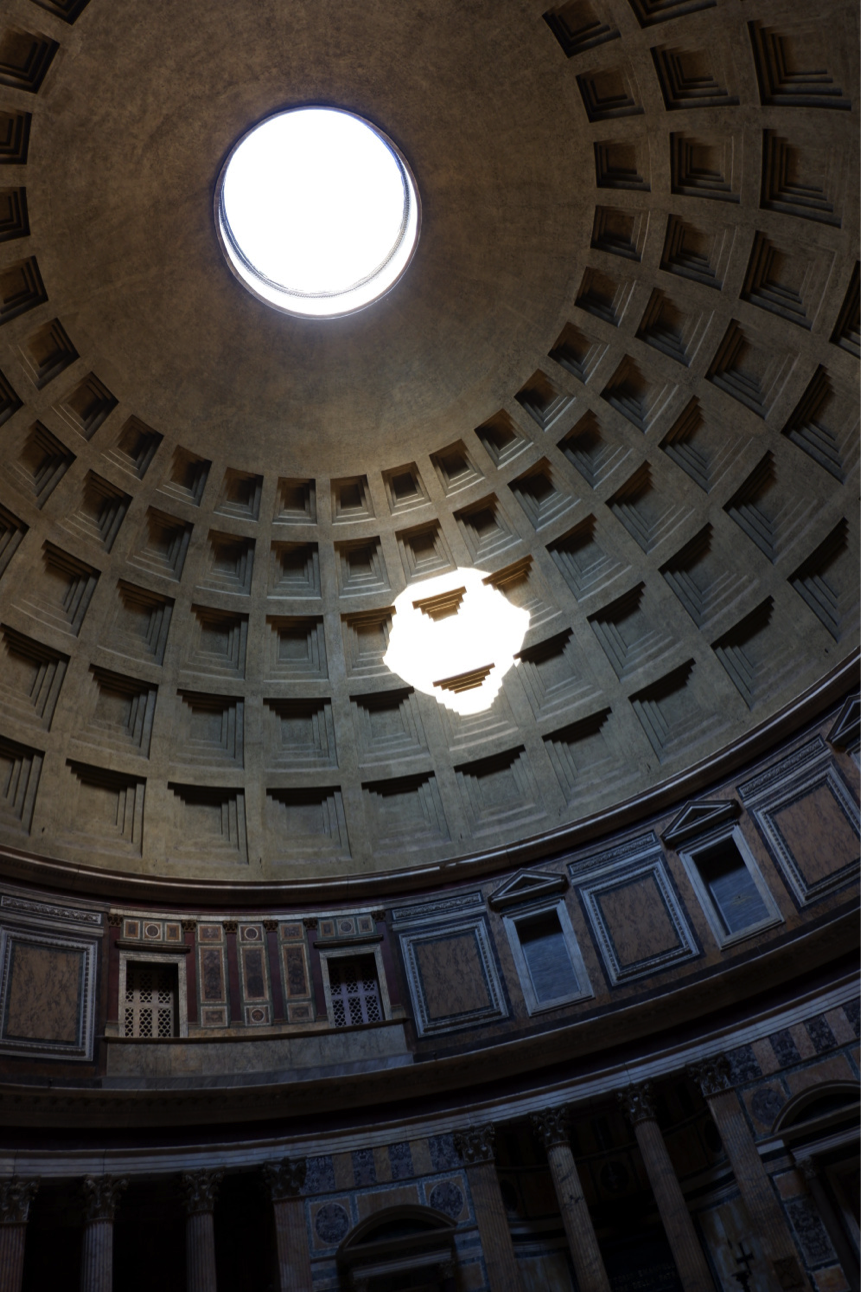
Two tombs of Italian kings (and one of their wives), and the tomb of the painter Raphael reside inside of the Pantheon. The tomb of Raphael is surprisingly simple for such a great painter; it simply has his coffin and statue of St. Mary that one of his students made. Even though his tomb changes the ancient design, it seems fitting that he would be laid to rest in such a beautiful place.
While we did not get to experience it while we were there, Professor Gurval says that his favorite time to visit the Pantheon is when it rains because rain will actually fall though the oculus (and all the tourists usually clear out). If you look closely, you can find drains built into the floor directly under the oculus. Originally, these drains ran out into fountains that lined the portico that surrounded the Pantheon.
Why I’m So Obsessed with it
The Pantheon is easily my favorite place in Rome. Besides having a courtyard on the outside with a fountain where you can fill up your water bottle and being close to my favorite gelato place in Rome (Giolitti’s), it really is one of the few places in Rome where you can really get a sense of the grandeur and wealth of ancient Rome. Most of the other buildings from antiquity are in ruins, and when they are not, they have been stripped of their decoration. The Pantheon still has all of its original interior marble decoration on the floors and the walls, and the impressive dome still stands in near perfect condition. It’s hard to walk into the forum, or even the coliseum, and fully grasp the wealth of Rome when all you see are dilapidated structures devoid of any sort of decoration, but walking into the Pantheon really shows you what ancient Rome would have looked like, and you get a sense of how powerful and wealthy the empire really was. It also helped me envision what the other sites would have looked like their prime, with beautiful, colored marble decorations and statues decorating the inside. The Pantheon may be one of the best preserved ancient monuments in the world, and it really allows you to get a taste of ancient Rome with much more accuracy than many of the other ancient sites.
Best Time to Visit
Unfortunately for those people who are not morning people, the best time to visit the Pantheon is right at 8:30 AM when it opens. I managed to drag myself here this early, and it really was incredible compared to the other times when I went in the middle of the day. There were maybe 20 other people inside with me (compared to the hundreds during other times). With less people there, you can really examine the floor and the walls (especially if you’re short like me), and admire the tombs and decorations without other people crowding you in. Additionally, with less people you really grasp just how large the structure is, it seems much smaller when you’re surrounded by people. The emptiness really allows you to take it all in.
In short, I love this place. It’s so well-preserved and really a beautiful site, and it’s completely free to visit. Definitely make sure to stop by if you’re Rome! It’s worth taking the time to see.


